

Elcometer 270 Pinhole Detector
- Protective Coatings
- Industrial Finishing
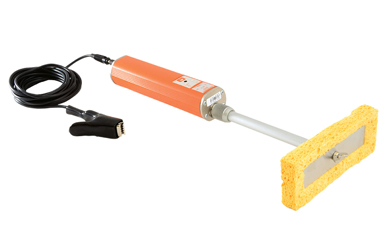
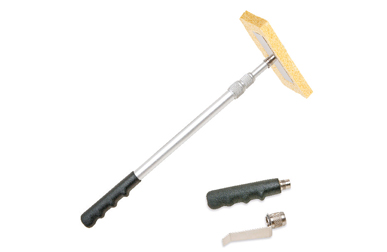
The Elcometer 270 Pinhole Tester range utilises the wet sponge technique and has been designed to set a new standard for wet sponge pinhole detectors.
- Summary
-
Summary
-
The Elcometer 270 Pinhole Tester is a high quality, low voltage detector and is supplied with similar accessories to a high voltage spark tester.
- Supplied ready to use
- Automatic sensitivity calibration and voltage checks
- Low battery indicator
- Visual and audible alarms
- Integral and separate wand functionality
- A wide range of fully interchangeable wand accessories
- Easy release snag proof cables
- Large standard sponge
- An inspection kit for all your requirements is available.
- Supplied ready to use
-
- Key Features
-
Key Features
Elcometer 270 Pinhole Detector
How do you test for pinholes with the Elcometer 270 Pinhole Tester?
When testing for pinholes on thin coatings, powder coatings, and other applications where you do not wish to damage the coating; typically the wet sponge technique, also known as the low voltage pinhole method, is used.
The wet sponge pinhole testing technique is a quick and simple method for testing insulation coatings less than 500 microns (20 mils) thick on conductive substrates. Put simply, a low voltage no bigger than 90 volts is applied to a damp sponge.
When you pass the sponge steadily over the coating, liquid from the sponge is drawn through any pinholes by capillary action; and when it touches the bare substrate, the current flows from the detector, through the substrate, and back to the detector through a signal return lead, which is clipped to an uncoated section of the substrate. This completes a low voltage circuit, setting off an alarm on the detector, letting you know where you have a pinhole.Supplied with 3 AA batteries that provide up to 200 hours use straight out of the box, the Elcometer 270 Pinhole Detector provides both visual and audible alarms when a flaw is found, and it is incredibly easy to use.
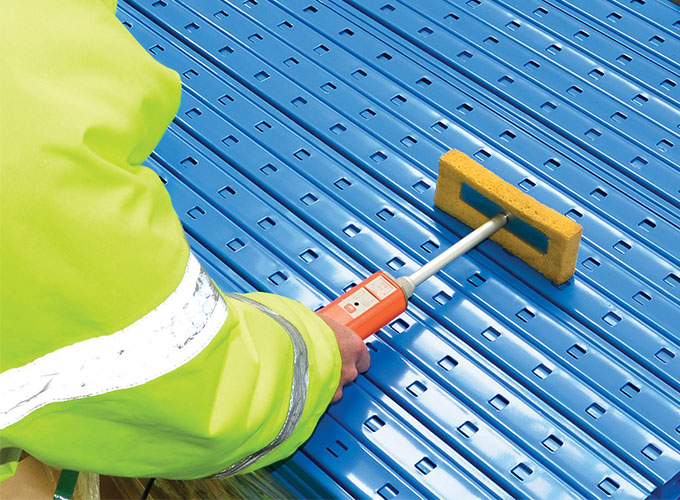
To begin, connect the signal return cable to an uncoated part of the substrate being tested, using the easy release crocodile clip. A 4m signal return cable is provided as standard, but if you’re testing on larger structures, a 10m cable is available. Either way, each signal cable is snag proof, so you can always move freely while testing.
Next, wet the sponge. This should be done with clean tap water, as it contains salts that allow it to conduct electricity. It’s important that you have an appropriate amount of water on the sponge before testing, as too little water will not conduct electricity and not locate any pinholes; whereas too much water will drip from the sponge and cover the surface under test, which can result in pinholes being detected in the wrong location.So, to ensure the sponge is suitably wetted; first thoroughly wet the sponge, then squeeze out the excess - so the sponge is damp, but water is not dripping freely from it.
To maximise the efficiency of the Elcometer 270 Pinhole Tester, you can add a surfactant to the water. Using a surfactant will significantly reduce the surface tension of the water, allowing the moisture to penetrate the smallest of pinholes. For how much to add, simply follow the dilution instructions supplied with the surfactant.With the sponge suitably damp, switch on the Elcometer 270 Pinhole Detector - keeping the sponge clear of the test surface.
The Elcometer 270 Pinhole Tester is available in either dual or triple voltage models. The dual voltage model can be set to 9V, for testing thin coatings up to 300 microns (12 mils) thick; and 90V, for coatings up to 500 microns (20mils). The triple voltage model can also test at 67.5V, the US standard test requirement.Every time the pinhole tester is switched on or the voltage is changed, the Elcometer 270 Pinhole Tester automatically tests the calibration of the internal voltage and sensitivity.
With the calibration tested, you can now pass the sponge over the coated surface to test for pinholes. If the sponge passes over a pinhole, the Elcometer 270 Pinhole Detector will instantly alarm.
If you need to locate a pinhole more precisely, simply retest the area using just a corner of the sponge.
-
- Technical Information
-
Technical SpecificationElcometer 270 Pinhole Detector
Elcometer 270/3 Pinhole Detector Elcometer 270/4 Pinhole Detector Certificate Part Number D270----3 D270----4 Part Number with Certificate D270----3C D270----4C 
Voltage 9V and 90V 9V, 67.5V and 90V Coating Range (Max) 500µm (20mils) 500µm (20mils) Sensitivity 9V: 90kΩ ±5%
90V: 400kΩ ±5%9V: 90kΩ ±5%
67.5V: 125kΩ ±5%
90V: 400kΩ ±5%Battery Life
(continuous use)9V: up to 200 hours
90V: up to 80 hours9V: up to 200 hours
67.5V: up to 100 hours
90V: up to 80 hoursBattery Type 3 x AA batteries (rechargeable batteries can also be used, but battery life will be reduced by up to 75%) Accuracy of Setting ±5% Dimensions Without wand 210 x 42 x 37mm (8.3 x 1.7 x 1.5”)
Standard wand 175mm (6.9”) long (including sponge)Weight 610g (21oz) including wand, cable and batteries Packing List Pinhole Detector, standard wand and flat sponge, 4m (13’ 2”) return lead with crocodile clip, 3 x AA (LR1600) batteries and operating instructions Elcometer 270/3 Pinhole Detector Elcometer 270/4 Pinhole Detector Part Number D270----3 D270----4 Certificate Part Number with Certificate D270----3C D270----4C Certificate 
Voltage 9V and 90V 9V, 67.5V and 90V Coating Range (Max) 500µm (20mils) 500µm (20mils) Sensitivity 9V: 90kΩ ±5%
90V: 400kΩ ±5%9V: 90kΩ ±5%
67.5V: 125kΩ ±5%
90V: 400kΩ ±5%Battery Life
(continuous use)9V: up to 200 hours
90V: up to 80 hours9V: up to 200 hours
67.5V: up to 100 hours
90V: up to 80 hoursBattery Type 3 x AA batteries (rechargeable batteries can also be used, but battery life will be reduced by up to 75%) Accuracy of Setting ±5% Dimensions Without wand 210 x 42 x 37mm (8.3 x 1.7 x 1.5”)
Standard wand 175mm (6.9”) long (including sponge)Weight 610g (21oz) including wand, cable and batteries Packing List Pinhole Detector, standard wand and flat sponge, 4m (13’ 2”) return lead with crocodile clip, 3 x AA (LR1600) batteries and operating instructions ● Calibration Certificate supplied as standard.
-
- Standards
-
StandardsElcometer 270 Pinhole Detector
AS 3894.2, ASTM D 5162-A, ASTM G6, ASTM G62-A, BS 7793-2, ISO 29601:2011, ISO 8289-A, ISO 14654, JIS K 6766, NACE RP 0188, NACE SP 0188, NACE TM0384
Standards in grey have been superseded but are still recognised in some industries.
-
- Downloads
-
Downloads
-
Elcometer 270 Pinhole Detector Multi-Lingual Instruction Manual
-
Elcometer 270 Pinhole Detector Data Sheet
-
Elcometer 270 Pinhole Detection Inspection Kit Data Sheet
-
Elcometer 270 Wetting Agent Material Safety Data Sheet
-
Elcometer 270 Pinhole Detector CE Declaration of Conformity
-
Elcometer 270 Pinhole Detector UKCA Declaration of Conformity
- Part Numbers
-
Part NumbersElcometer 270 Pinhole DetectorNo data found!!
-
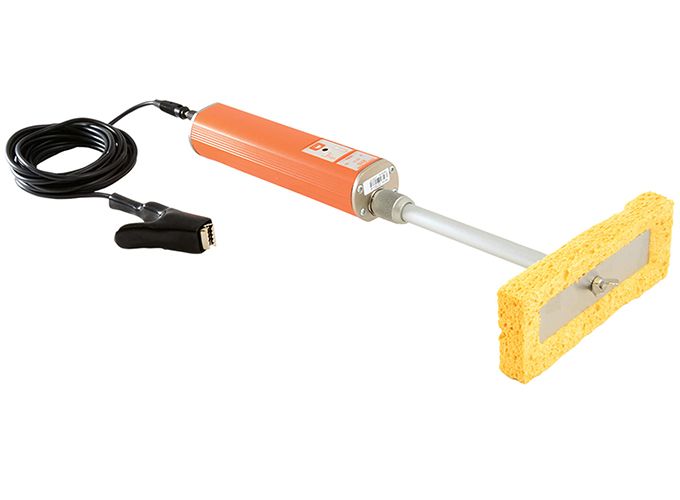 Elcometer 270/3 Pinhole Detector
Elcometer 270/3 Pinhole Detector- Voltage: 9V and 90V
- Part Number : D270----3
-
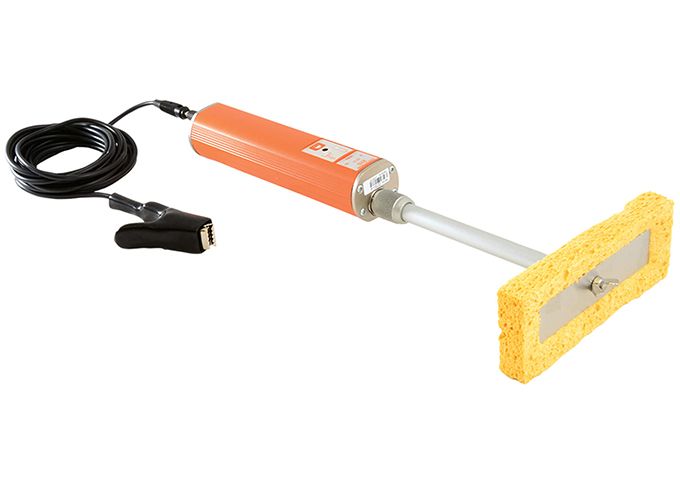 Elcometer 270/3 Pinhole Detector with calibration certificate
Elcometer 270/3 Pinhole Detector with calibration certificate- Voltage: 9V, 90V
- Part Number : D270----3C
-
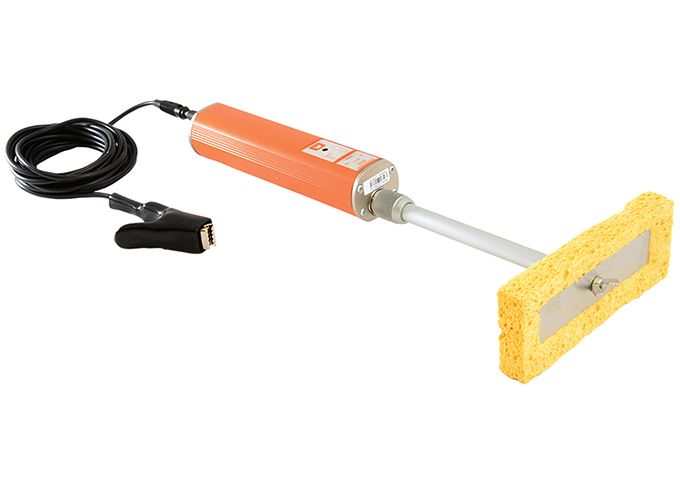 Elcometer 270/4 Pinhole Detector
Elcometer 270/4 Pinhole Detector- Voltage: 9V, 67.5V and 90V
- Part Number : D270----4
-
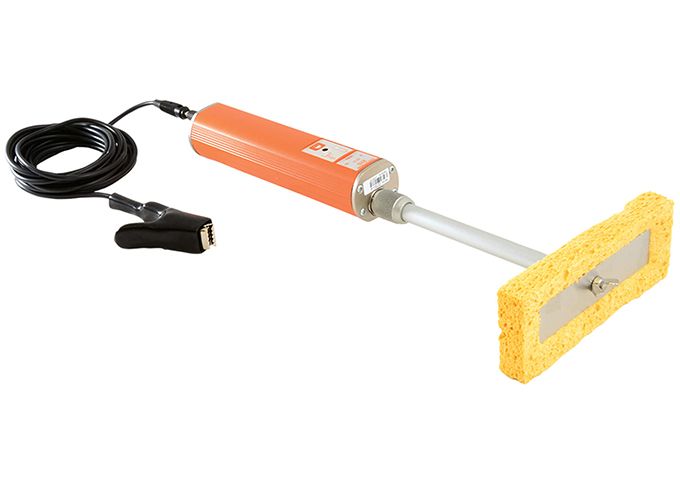 Elcometer 270/4 Pinhole Detector with calibration certificate
Elcometer 270/4 Pinhole Detector with calibration certificate- Voltage: 9V, 67.5V, 90V
- Part Number : D270----4C
- Accessories
-
AccessoriesElcometer 270 Pinhole Detector
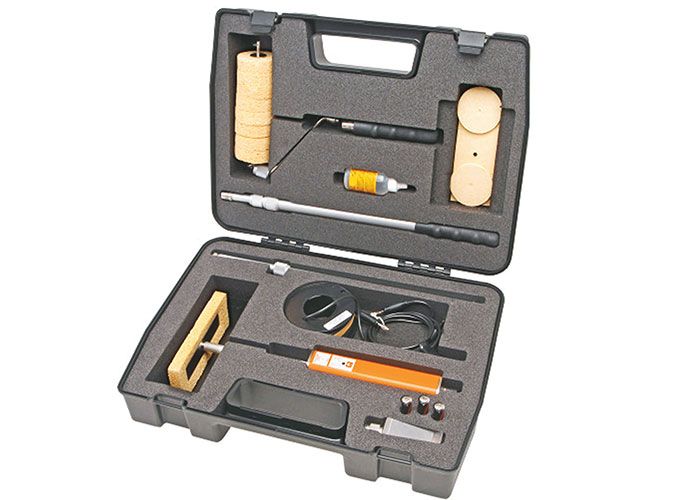 Part Number: T27018191
Part Number: T27018191 Part Number: T27016867
Part Number: T27016867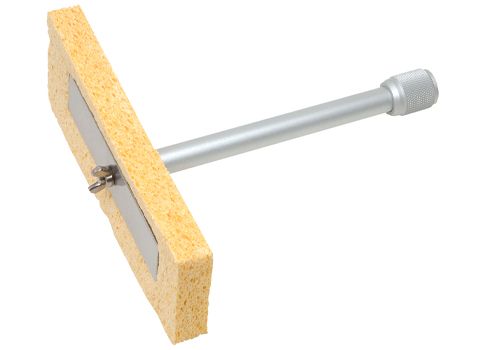 Part Number: T27018050
Part Number: T27018050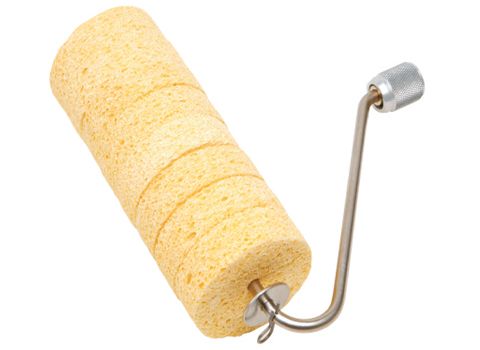 Part Number: T27016960
Part Number: T27016960 Part Number: T27018051
Part Number: T27018051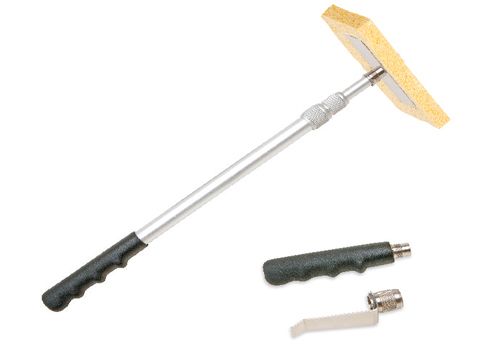 Part Number: T27016998
Part Number: T27016998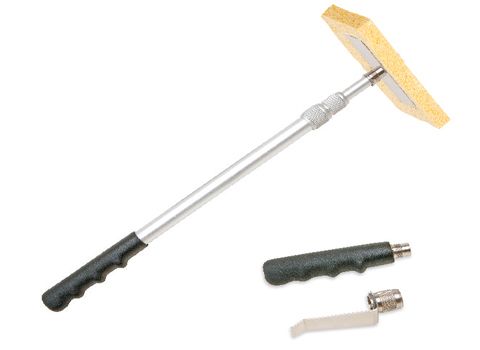 Part Number: T27016999
Part Number: T27016999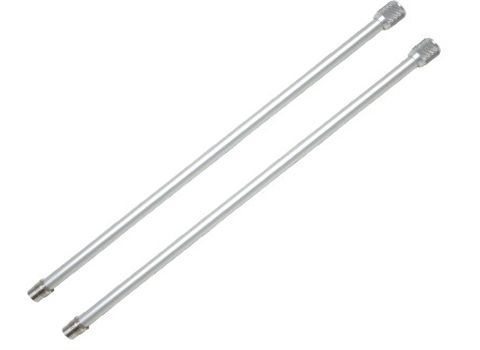 Part Number: T27016965
Part Number: T27016965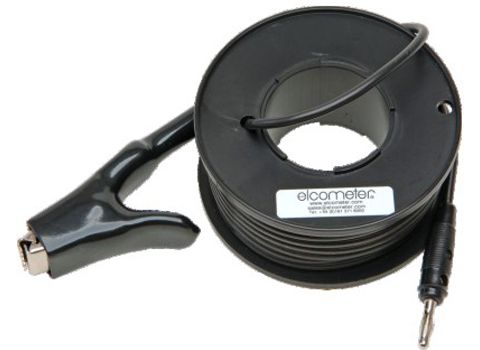 Part Number: T99916954
Part Number: T99916954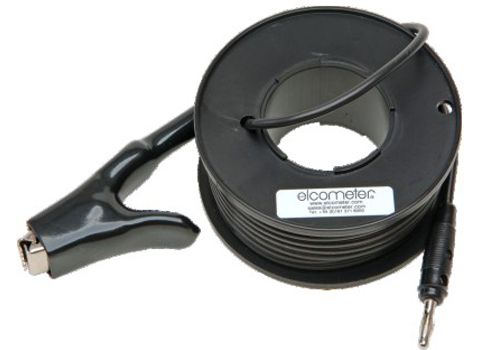 Part Number: T99916996
Part Number: T99916996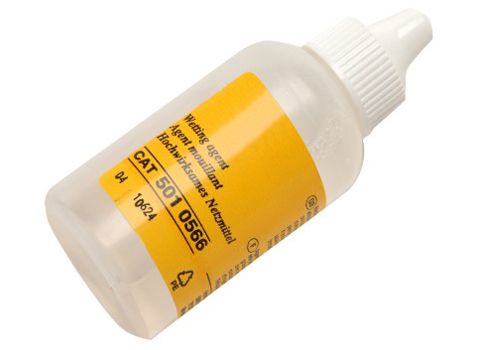 Part Number: T27018024
Part Number: T27018024
Welcome to Elcometer.tv
Your ultimate training channel -


- Home
- Elcometer 270 Pinhole Detector
Elcometer 270 Pinhole Detector
- Protective Coatings
- Industrial Finishing


The Elcometer 270 Pinhole Tester range utilises the wet sponge technique and has been designed to set a new standard for wet sponge pinhole detectors.
Summary
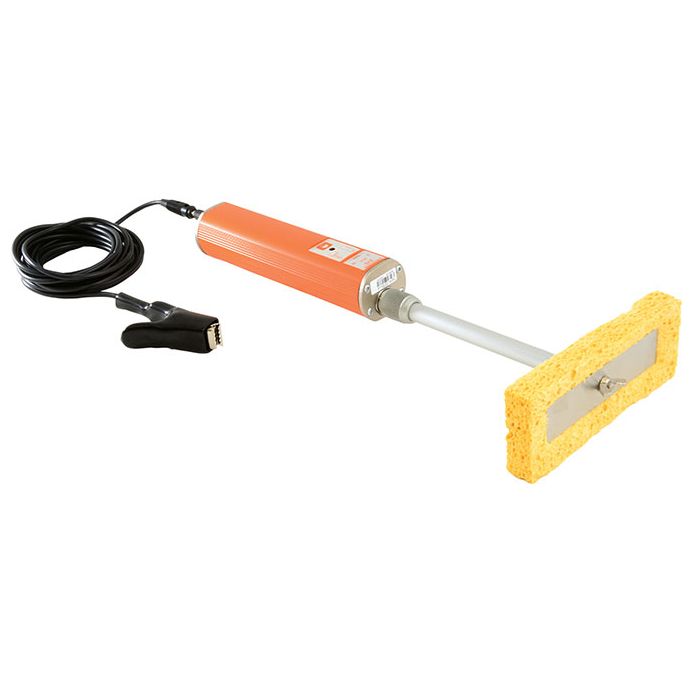
Elcometer 270 Pinhole Detector
The Elcometer 270 Pinhole Tester is a high quality, low voltage detector and is supplied with similar accessories to a high voltage spark tester.
- Supplied ready to use
- Automatic sensitivity calibration and voltage checks
- Low battery indicator
- Visual and audible alarms
- Integral and separate wand functionality
- A wide range of fully interchangeable wand accessories
- Easy release snag proof cables
- Large standard sponge
- An inspection kit for all your requirements is available.
Downloads-
Elcometer 270 Pinhole Detector Multi-Lingual Instruction Manual
-
Elcometer 270 Pinhole Detector Data Sheet
-
Elcometer 270 Pinhole Detection Inspection Kit Data Sheet
-
Elcometer 270 Wetting Agent Material Safety Data Sheet
-
Elcometer 270 Pinhole Detector CE Declaration of Conformity
-
Elcometer 270 Pinhole Detector UKCA Declaration of Conformity
Key Features
Elcometer 270 Pinhole Detector
How do you test for pinholes with the Elcometer 270 Pinhole Tester?
When testing for pinholes on thin coatings, powder coatings, and other applications where you do not wish to damage the coating; typically the wet sponge technique, also known as the low voltage pinhole method, is used.
The wet sponge pinhole testing technique is a quick and simple method for testing insulation coatings less than 500 microns (20 mils) thick on conductive substrates. Put simply, a low voltage no bigger than 90 volts is applied to a damp sponge.
When you pass the sponge steadily over the coating, liquid from the sponge is drawn through any pinholes by capillary action; and when it touches the bare substrate, the current flows from the detector, through the substrate, and back to the detector through a signal return lead, which is clipped to an uncoated section of the substrate. This completes a low voltage circuit, setting off an alarm on the detector, letting you know where you have a pinhole.Supplied with 3 AA batteries that provide up to 200 hours use straight out of the box, the Elcometer 270 Pinhole Detector provides both visual and audible alarms when a flaw is found, and it is incredibly easy to use.

To begin, connect the signal return cable to an uncoated part of the substrate being tested, using the easy release crocodile clip. A 4m signal return cable is provided as standard, but if you’re testing on larger structures, a 10m cable is available. Either way, each signal cable is snag proof, so you can always move freely while testing.
Next, wet the sponge. This should be done with clean tap water, as it contains salts that allow it to conduct electricity. It’s important that you have an appropriate amount of water on the sponge before testing, as too little water will not conduct electricity and not locate any pinholes; whereas too much water will drip from the sponge and cover the surface under test, which can result in pinholes being detected in the wrong location.So, to ensure the sponge is suitably wetted; first thoroughly wet the sponge, then squeeze out the excess - so the sponge is damp, but water is not dripping freely from it.
To maximise the efficiency of the Elcometer 270 Pinhole Tester, you can add a surfactant to the water. Using a surfactant will significantly reduce the surface tension of the water, allowing the moisture to penetrate the smallest of pinholes. For how much to add, simply follow the dilution instructions supplied with the surfactant.With the sponge suitably damp, switch on the Elcometer 270 Pinhole Detector - keeping the sponge clear of the test surface.
The Elcometer 270 Pinhole Tester is available in either dual or triple voltage models. The dual voltage model can be set to 9V, for testing thin coatings up to 300 microns (12 mils) thick; and 90V, for coatings up to 500 microns (20mils). The triple voltage model can also test at 67.5V, the US standard test requirement.Every time the pinhole tester is switched on or the voltage is changed, the Elcometer 270 Pinhole Tester automatically tests the calibration of the internal voltage and sensitivity.
With the calibration tested, you can now pass the sponge over the coated surface to test for pinholes. If the sponge passes over a pinhole, the Elcometer 270 Pinhole Detector will instantly alarm.
If you need to locate a pinhole more precisely, simply retest the area using just a corner of the sponge.Technical SpecificationElcometer 270 Pinhole DetectorElcometer 270/3 Pinhole Detector Elcometer 270/4 Pinhole Detector Certificate Part Number D270----3 D270----4 Part Number with Certificate D270----3C D270----4C 
Voltage 9V and 90V 9V, 67.5V and 90V Coating Range (Max) 500µm (20mils) 500µm (20mils) Sensitivity 9V: 90kΩ ±5%
90V: 400kΩ ±5%9V: 90kΩ ±5%
67.5V: 125kΩ ±5%
90V: 400kΩ ±5%Battery Life
(continuous use)9V: up to 200 hours
90V: up to 80 hours9V: up to 200 hours
67.5V: up to 100 hours
90V: up to 80 hoursBattery Type 3 x AA batteries (rechargeable batteries can also be used, but battery life will be reduced by up to 75%) Accuracy of Setting ±5% Dimensions Without wand 210 x 42 x 37mm (8.3 x 1.7 x 1.5”)
Standard wand 175mm (6.9”) long (including sponge)Weight 610g (21oz) including wand, cable and batteries Packing List Pinhole Detector, standard wand and flat sponge, 4m (13’ 2”) return lead with crocodile clip, 3 x AA (LR1600) batteries and operating instructions Elcometer 270/3 Pinhole Detector Elcometer 270/4 Pinhole Detector Part Number D270----3 D270----4 Certificate Part Number with Certificate D270----3C D270----4C Certificate 
Voltage 9V and 90V 9V, 67.5V and 90V Coating Range (Max) 500µm (20mils) 500µm (20mils) Sensitivity 9V: 90kΩ ±5%
90V: 400kΩ ±5%9V: 90kΩ ±5%
67.5V: 125kΩ ±5%
90V: 400kΩ ±5%Battery Life
(continuous use)9V: up to 200 hours
90V: up to 80 hours9V: up to 200 hours
67.5V: up to 100 hours
90V: up to 80 hoursBattery Type 3 x AA batteries (rechargeable batteries can also be used, but battery life will be reduced by up to 75%) Accuracy of Setting ±5% Dimensions Without wand 210 x 42 x 37mm (8.3 x 1.7 x 1.5”)
Standard wand 175mm (6.9”) long (including sponge)Weight 610g (21oz) including wand, cable and batteries Packing List Pinhole Detector, standard wand and flat sponge, 4m (13’ 2”) return lead with crocodile clip, 3 x AA (LR1600) batteries and operating instructions ● Calibration Certificate supplied as standard.StandardsElcometer 270 Pinhole DetectorAS 3894.2, ASTM D 5162-A, ASTM G6, ASTM G62-A, BS 7793-2, ISO 29601:2011, ISO 8289-A, ISO 14654, JIS K 6766, NACE RP 0188, NACE SP 0188, NACE TM0384
Standards in grey have been superseded but are still recognised in some industries.
Part NumbersElcometer 270 Pinhole DetectorNo data found!!-
 Elcometer 270/3 Pinhole Detector
Elcometer 270/3 Pinhole Detector- Voltage: 9V and 90V
- Part Number : D270----3
-
 Elcometer 270/3 Pinhole Detector with calibration certificate
Elcometer 270/3 Pinhole Detector with calibration certificate- Voltage: 9V, 90V
- Part Number : D270----3C
-
 Elcometer 270/4 Pinhole Detector
Elcometer 270/4 Pinhole Detector- Voltage: 9V, 67.5V and 90V
- Part Number : D270----4
-
 Elcometer 270/4 Pinhole Detector with calibration certificate
Elcometer 270/4 Pinhole Detector with calibration certificate- Voltage: 9V, 67.5V, 90V
- Part Number : D270----4C
Welcome to Elcometer.tv
Your ultimate training channelAccessoriesElcometer 270 Pinhole Detector Part Number: T27018191
Part Number: T27018191 Part Number: T27016867
Part Number: T27016867 Part Number: T27018050
Part Number: T27018050 Part Number: T27016960
Part Number: T27016960 Part Number: T27018051
Part Number: T27018051 Part Number: T27016998
Part Number: T27016998 Part Number: T27016999
Part Number: T27016999 Part Number: T27016965
Part Number: T27016965 Part Number: T99916954
Part Number: T99916954 Part Number: T99916996
Part Number: T99916996 Part Number: T27018024
Part Number: T27018024
-
-
